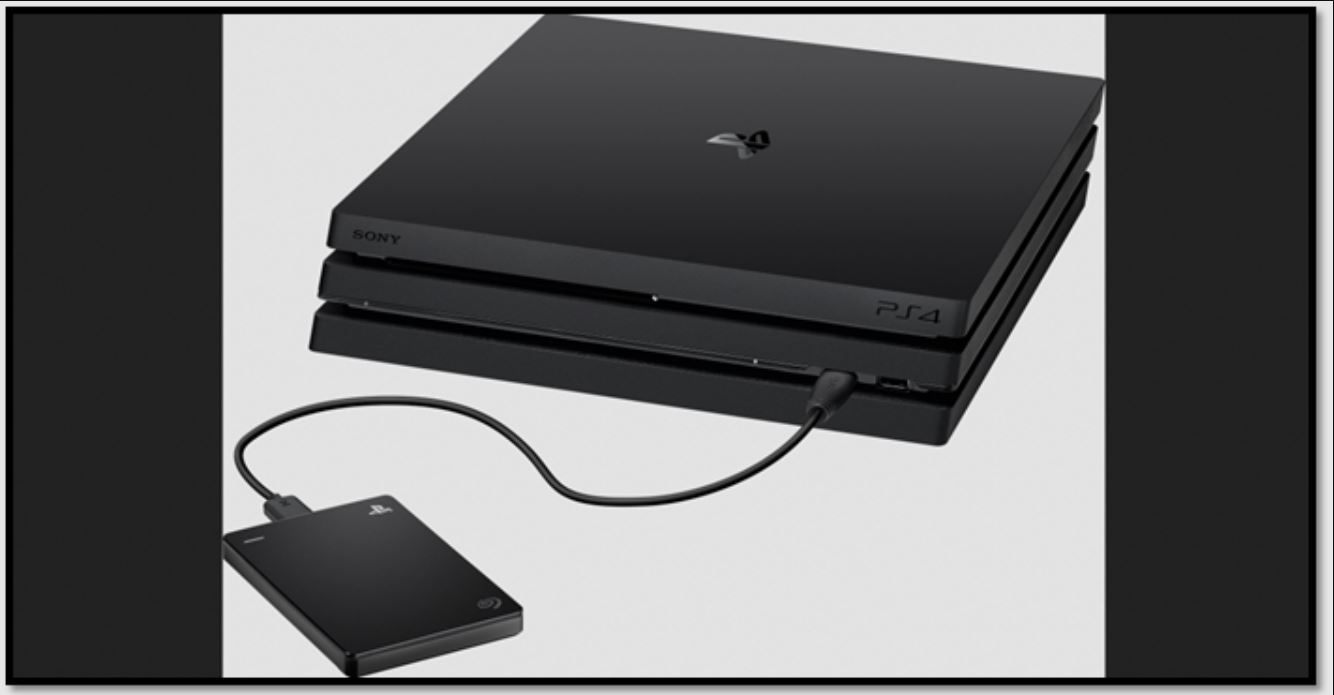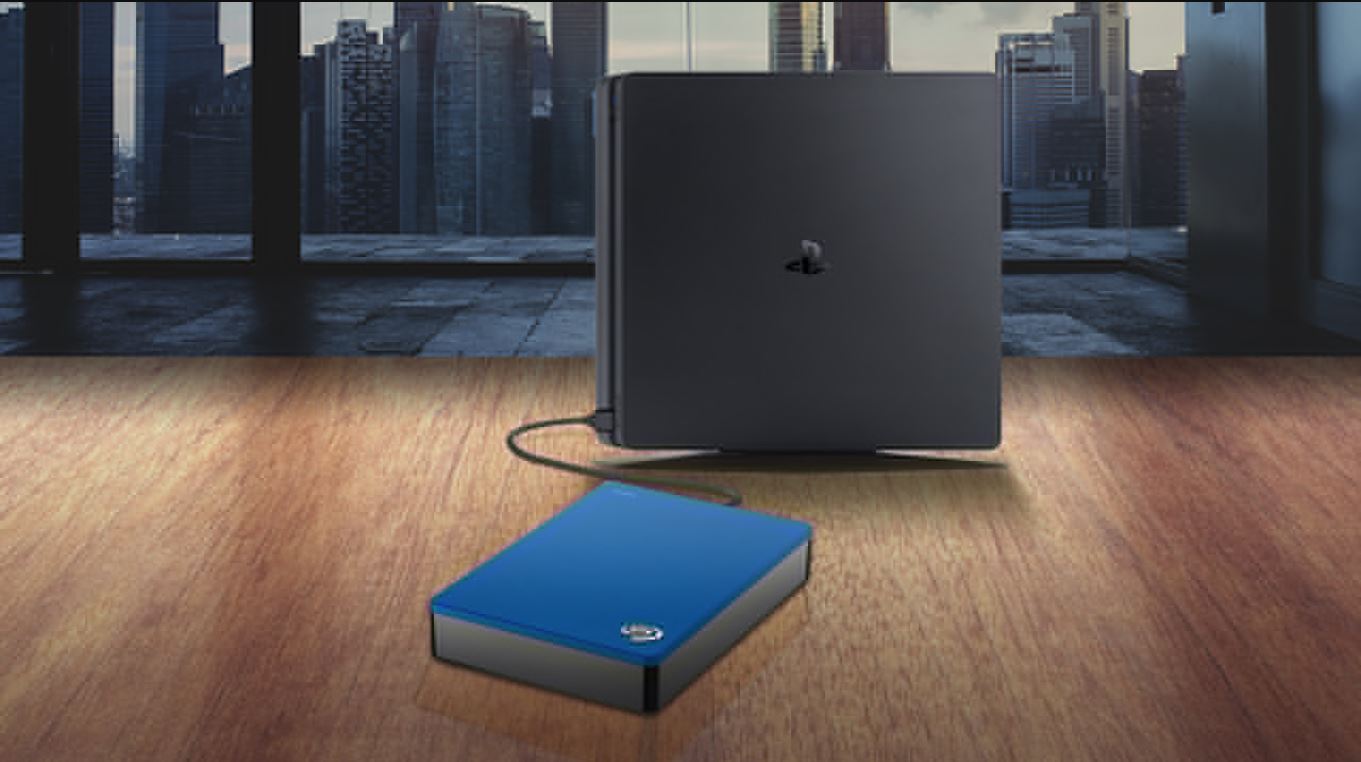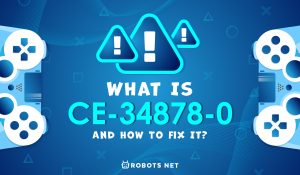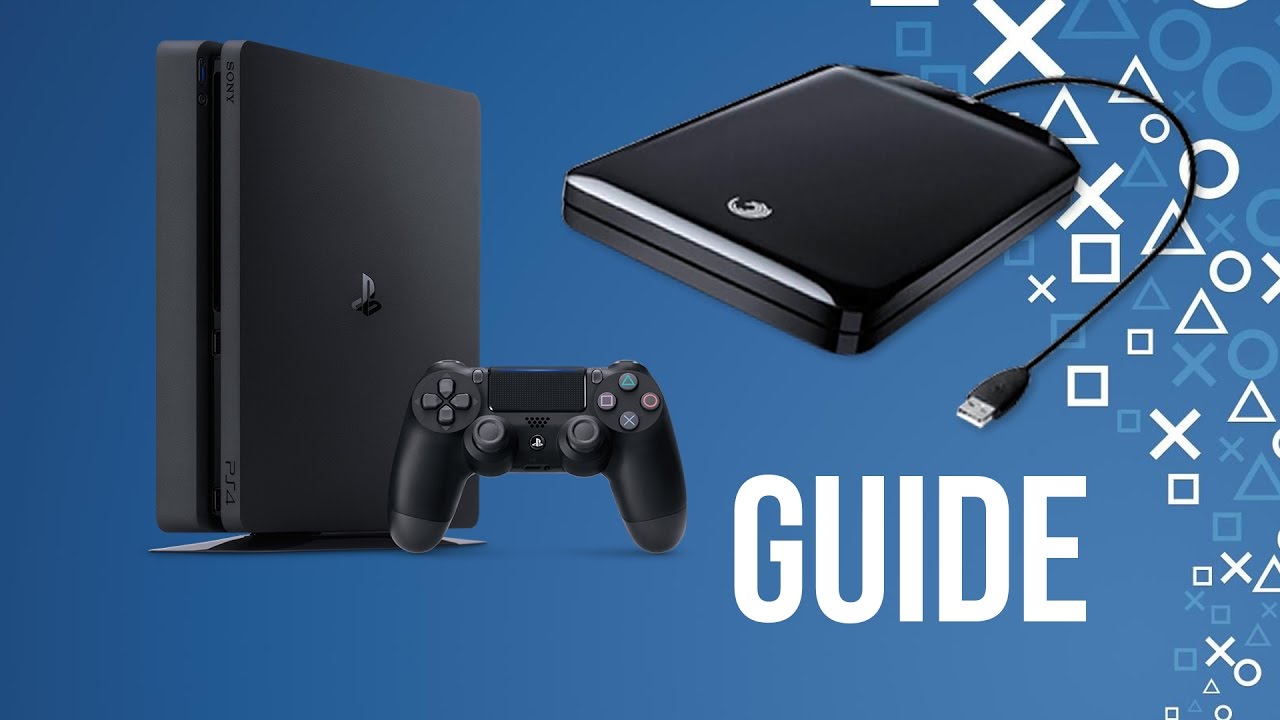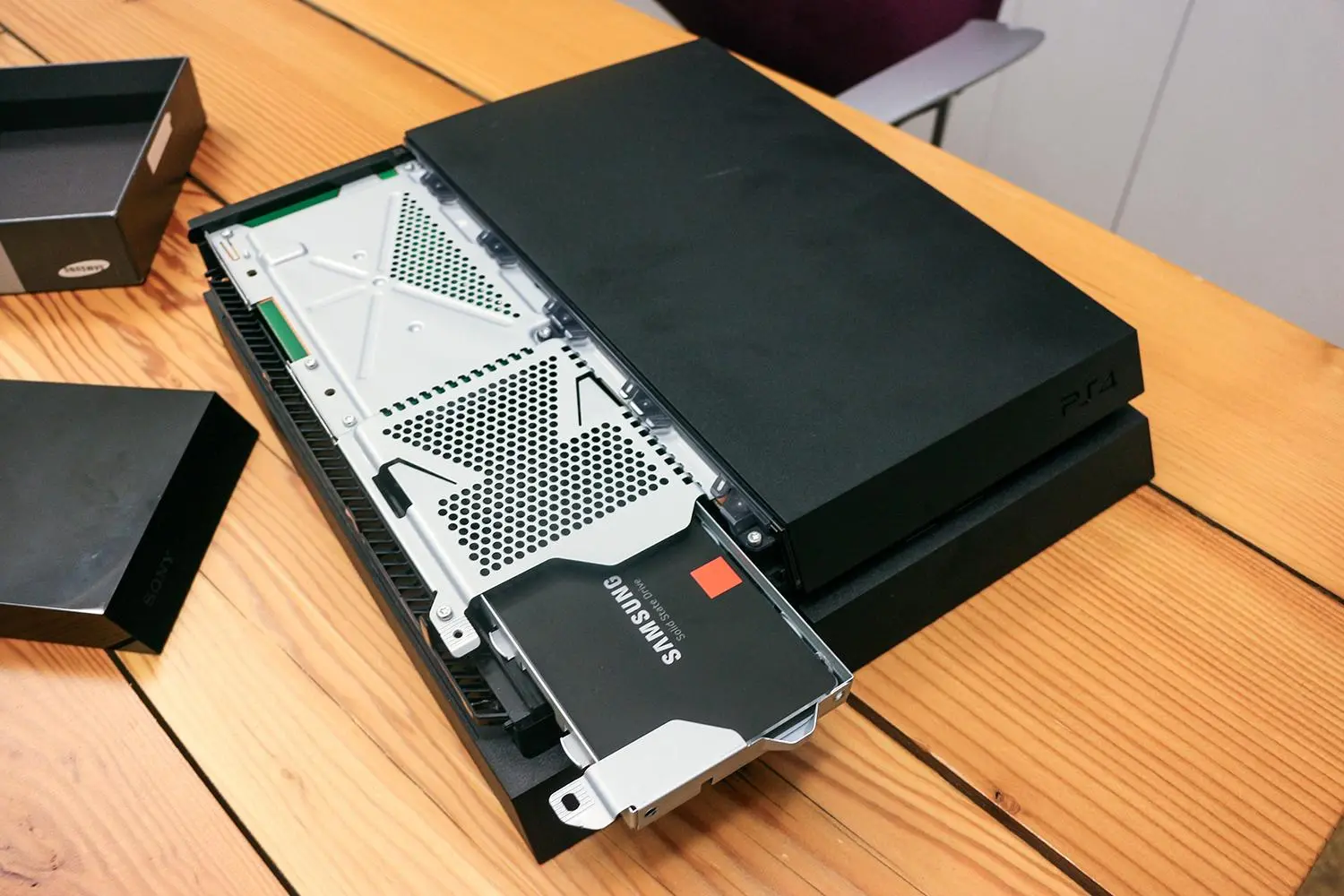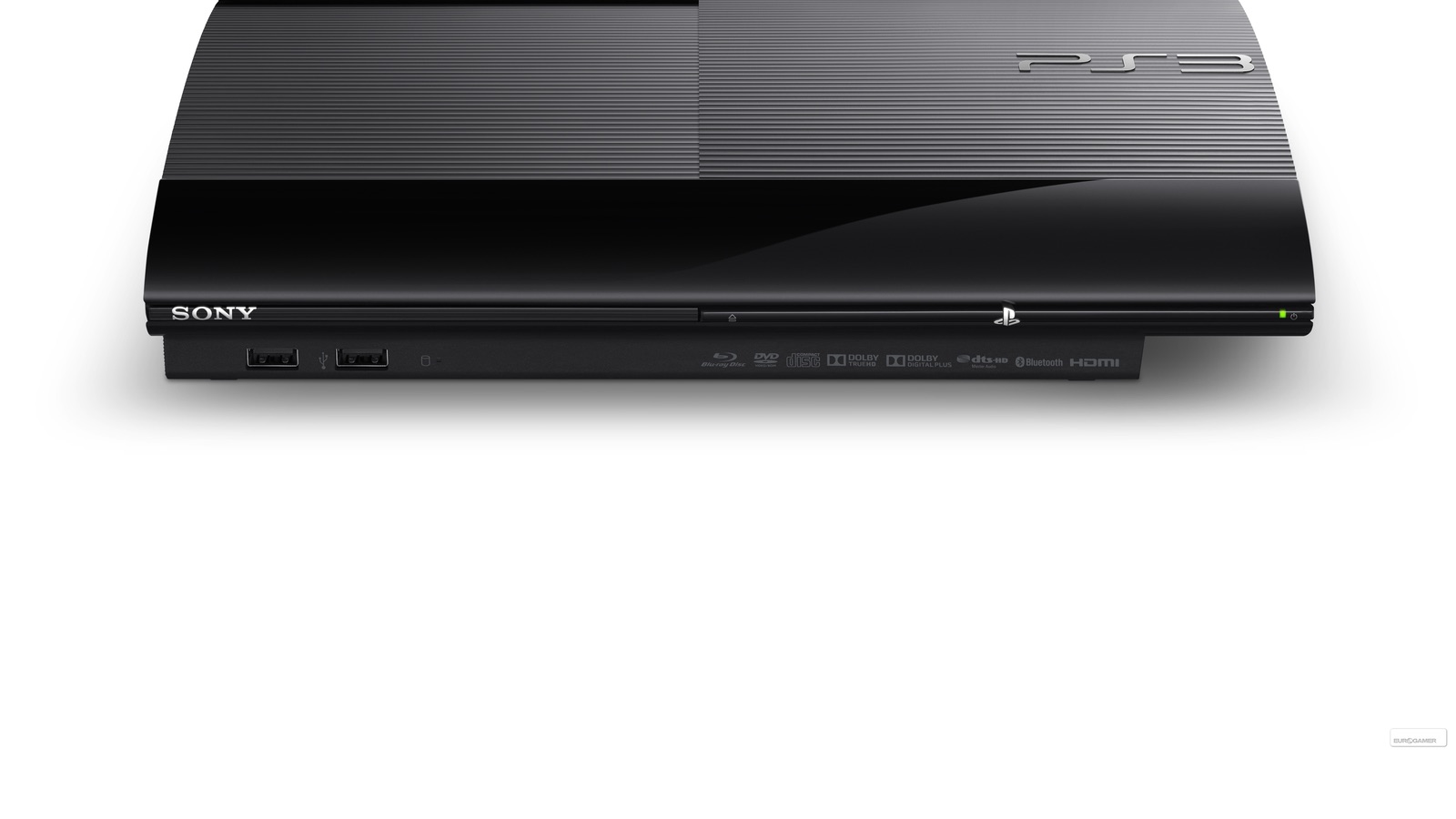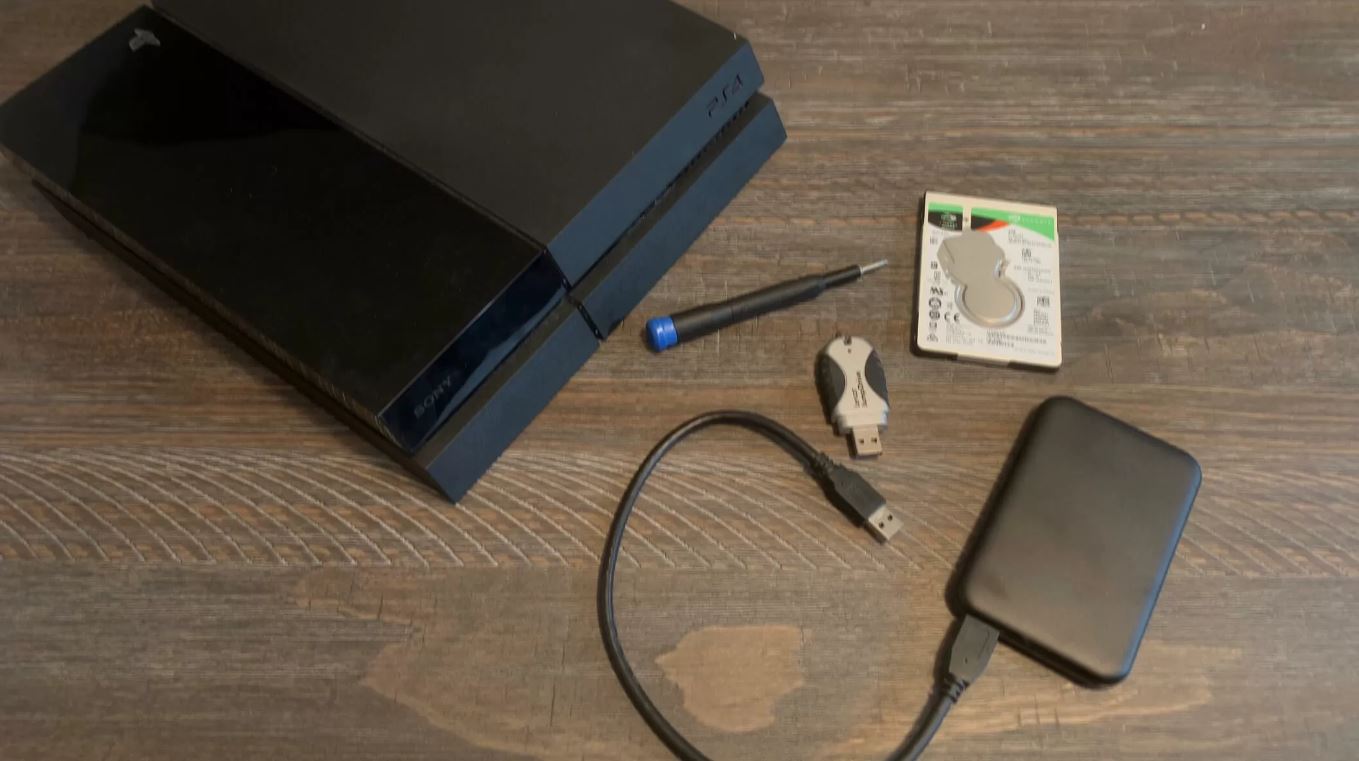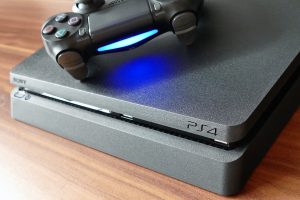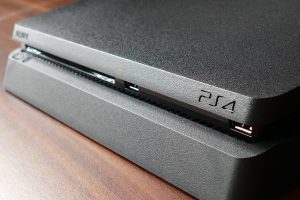Introduction
Welcome to our guide on how to fix a PS4 external hard drive. Many PlayStation 4 owners use external hard drives to expand their console’s storage capacity and store a large library of games and media. However, like any electronic device, external hard drives can encounter issues that disrupt their functionality. In this article, we will outline some common issues with PS4 external hard drives and provide troubleshooting steps to help you resolve them.
External hard drive problems can range from connectivity issues to formatting errors and even drive corruption. These issues can prevent the PS4 from recognizing the external hard drive, making it impossible to access the stored data or install games. In some cases, the external hard drive may be detectable but encountering performance problems, such as slow read or write speeds, freezing, or crashing.
Identifying the cause of the problem is crucial in effectively troubleshooting and fixing the issue. It could be as simple as a loose connection or a compatibility problem, or it may require more advanced techniques such as formatting, rebuilding the PS4 database, or repairing file system errors. In some cases, professional assistance or warranty support may be needed to resolve the issue.
In the following sections, we will guide you through step-by-step troubleshooting methods to help you fix your PS4 external hard drive. It is important to note that while these steps are generally effective, there may be cases where the issue persists or worsens. Therefore, it’s essential to back up your data before attempting any troubleshooting, as some solutions may involve formatting or restoring your external hard drive to factory settings, which will result in data loss.
Common Issues with PS4 External Hard Drives
PS4 external hard drives can experience various problems that can hinder their performance and functionality. Here are some of the common issues you may encounter:
- Connectivity Issues: One of the most common issues is the external hard drive not being detected or recognized by the PS4. This can be caused by loose or faulty cables, USB port malfunctions, or compatibility issues between the external hard drive and the PS4.
- Formatting Errors: Sometimes, the external hard drive may require formatting to be fully compatible with the PS4. However, if the formatting process fails or is interrupted, it can result in formatting errors that prevent the PS4 from accessing or recognizing the external hard drive.
- Drive Corruption: External hard drives are not immune to corruption, which can occur due to factors like sudden power outages, improper ejection, or file system errors. When a drive becomes corrupt, it can lead to data loss, inaccessibility, or overall poor performance when connected to the PS4.
- Performance Problems: Slow read or write speeds, frequent freezing or crashing, and overall sluggish performance are some performance-related issues that can occur with PS4 external hard drives. These problems can be attributed to various factors, including drive fragmentation, insufficient power supply, or hardware malfunctions.
While these are common issues, it is important to note that other factors, such as software glitches or PS4 system errors, can also contribute to problems with external hard drives. Therefore, it’s essential to thoroughly diagnose the issue before proceeding with troubleshooting steps.
In the next section, we will discuss how to determine the cause of the problem with your PS4 external hard drive to effectively address the issue and restore its functionality.
Determining the Cause of the Problem
Before you begin troubleshooting your PS4 external hard drive, it’s important to determine the root cause of the issue. This will help you effectively address the problem and choose the appropriate troubleshooting steps. Here are some steps to help you determine the cause:
- Check Physical Connections: Ensure that all cables connecting the external hard drive to the PS4 are secure and properly plugged in. Faulty or loose connections can result in connectivity issues and prevent the PS4 from detecting the external hard drive.
- Verify Compatibility and Power Requirements: Check if the external hard drive is compatible with your PS4 model and meets the power requirements. Some external hard drives may require an external power source or have specific compatibility requirements that need to be met for proper functioning.
- Observe Error Messages or Codes: Take note of any error messages or codes that appear on your PS4 screen when you connect or access the external hard drive. These error messages can provide valuable clues about the underlying issue.
- Test the Drive on Another Device: Connect the external hard drive to another device, such as a computer or another gaming console, to determine if the issue is specific to the PS4 or the external hard drive itself.
- Consider Recent Changes or Updates: Think about any recent changes or updates that may have affected the performance of the external hard drive. This could include PS4 system updates, firmware updates for the external hard drive, or changes in settings or configurations.
By following these steps, you can narrow down the potential causes of the problem. This will allow you to focus your troubleshooting efforts and address the issue more effectively. In the next section, we will provide a step-by-step guide for troubleshooting common issues with PS4 external hard drives.
Troubleshooting Steps
When encountering issues with your PS4 external hard drive, there are several troubleshooting steps you can take to resolve the problem. Here is a step-by-step guide to help you troubleshoot and fix common issues:
- Checking the Physical Connections: Ensure that all cables connecting the external hard drive to the PS4 are securely plugged in. Try using a different USB port or replacing the cables if necessary.
- Verifying Compatibility and Power Requirements: Make sure that the external hard drive is compatible with your PS4 model and meets the necessary power requirements. Refer to the manufacturer’s instructions or website for compatibility information.
- Updating PS4 System Software: Ensure that your PS4 system software is up to date. Go to the settings menu, select “System Software Update,” and follow the on-screen instructions to download and install any available updates.
- Formatting the External Hard Drive: If the external hard drive is not recognized by the PS4, you may need to format it. Go to the settings menu, select “Devices,” then “USB Storage Devices,” and choose the external hard drive. Select “Format as Extended Storage” and follow the prompts to format the drive for use with the PS4.
- Rebuilding PS4 Database: A corrupted or fragmented PS4 database can affect the performance of your external hard drive. To rebuild the database, turn off the PS4, then press and hold the power button until you hear a second beep. Connect the controller via USB and select the “Rebuild Database” option. Note that this process may take some time.
- Repairing File System Errors: Use the PS4 Safe Mode to repair file system errors on your external hard drive. Turn off the PS4, then press and hold the power button until you hear a second beep. Connect the controller via USB and select the “Rebuild Database” option. This will check and repair any file system errors that may be affecting the drive’s performance.
- Running Disk Management Tools: Connect the external hard drive to a computer and run disk management tools such as CHKDSK (for Windows) or Disk Utility (for Mac) to scan and repair any potential errors on the drive.
- Testing the External Hard Drive on a Different Device: Connect the external hard drive to another device, such as a computer, to determine if the issue is specific to the PS4 or the drive itself. If the drive works correctly on another device, the problem may be with your PS4.
- Seeking Professional Help or Warranty Support: If none of the above steps resolve the issue, consider contacting the manufacturer for further assistance or checking if the drive is still under warranty. They may be able to provide detailed troubleshooting steps or offer a replacement if the drive is defective.
By following these troubleshooting steps, you can greatly increase the chances of resolving issues with your PS4 external hard drive. However, if the problem persists or worsens, it is recommended to seek professional help or contact the manufacturer for further assistance. Remember to back up your data before attempting any troubleshooting steps that may result in data loss.
Checking the Physical Connections
One of the first steps in troubleshooting issues with your PS4 external hard drive is to ensure that all physical connections are secure and properly connected. Loose or faulty connections can cause connectivity issues and prevent the PS4 from detecting the external hard drive. Here’s how you can check the physical connections:
- Inspect the Cables: Examine the USB cable connecting the external hard drive to the PS4. Look for any signs of damage, such as frayed wires or bent connectors. If you notice any damage, replace the cable with a new one.
- Check the USB Port: Ensure that the USB port on the PS4 is clean and free from any debris. Blow gently into the port or use a can of compressed air to remove any dust or dirt that may be obstructing the connection.
- Reconnect the Cable: Disconnect the USB cable from both the PS4 and the external hard drive. Wait for a few seconds and then reconnect the cable securely. Ensure that the connection is tight and snug.
- Try a Different USB Port: If the external hard drive is not being recognized, try connecting it to a different USB port on the PS4. Sometimes, certain USB ports may have compatibility issues or not provide enough power to the external hard drive.
- Consider Using a Powered USB Hub: If you are connecting multiple USB devices to your PS4, it can strain the power supply. Consider using a powered USB hub to ensure that all connected devices receive sufficient power.
After performing these steps, check if the PS4 recognizes the external hard drive. If it does, the issue may have been due to a loose connection or a faulty cable. However, if the problem persists, you may need to move on to the next troubleshooting step. Checking the physical connections is a simple yet crucial step in identifying and resolving any connectivity issues with your PS4 external hard drive.
Verifying Compatibility and Power Requirements
Another crucial aspect to consider when troubleshooting issues with your PS4 external hard drive is to ensure that it is compatible with your PS4 model and meets the necessary power requirements. Incompatible or underpowered external hard drives may not work properly or may not be recognized by the PS4. Here’s how you can verify compatibility and power requirements:
- Check the PS4 Compatibility: Refer to the PS4 user manual or official website to determine the compatibility requirements for external hard drives. Different PS4 models may have specific compatibility specifications, such as requiring certain USB versions or file system formats.
- Refer to the External Hard Drive Specifications: Check the specifications of your external hard drive and ensure that it meets the requirements specified by the PS4. Look for information regarding compatibility with gaming consoles or specifically with the PS4.
- Verify Power Requirements: Some external hard drives require an external power source to operate correctly. Make sure that your external hard drive is connected to a power outlet if it needs external power. If your external hard drive is powered solely by the USB port, ensure that it receives sufficient power by connecting it directly to a primary USB port on the PS4.
- Consider Using a Y-Cable: If your external hard drive requires more power than what a single USB port can provide, you may need to use a Y-cable. A Y-cable connects to two USB ports on the PS4, allowing for increased power supply to the external hard drive.
- Update Firmware: Check the external hard drive manufacturer’s website for any firmware updates. Firmware updates can improve compatibility and performance with the PS4. Follow the manufacturer’s instructions on how to update the firmware on your external hard drive.
By verifying compatibility and power requirements, you can ensure that your PS4 external hard drive is supported by the PS4 and receiving adequate power for proper functioning. If you find that your external hard drive is not compatible or requires additional power, you may need to consider purchasing a different external hard drive that meets the necessary requirements. Proceed to the next troubleshooting step if the issue persists after verifying compatibility and power requirements.
Updating PS4 System Software
Updating the PS4 system software can help resolve compatibility issues and improve overall performance, including the functionality of your external hard drive. To ensure optimal compatibility and functionality, it is important to keep your PS4 system software up to date. Here’s how you can update the PS4 system software:
- Connect to the Internet: Ensure that your PS4 is connected to the internet either via Wi-Fi or through an Ethernet cable. A stable internet connection is necessary to download and install system software updates.
- Access System Software Update: From the PS4 home screen, navigate to the “Settings” menu.
- Select System Software Update: Scroll down and select the “System Software Update” option. The PS4 will search for available updates.
- Download and Install Updates: If there is a new system software update available, follow the on-screen instructions to download and install it. Ensure that your PS4 is connected to a power source and allow the update process to complete without interruption.
- Restart the PS4: Once the update is installed, restart your PS4 to apply the changes. This will ensure that your PS4 system software is up to date.
Regularly updating the PS4 system software can not only improve compatibility with external devices like hard drives but also provide new features, bug fixes, and security enhancements. It is recommended to enable automatic updates in the PS4 settings to ensure that your system software stays up to date without manual intervention.
If you have already updated your PS4 system software and the issue with your external hard drive persists, proceed to the next troubleshooting step. Updating the system software may not resolve all issues, but it is an essential step in optimizing compatibility between your PS4 and external devices.
Formatting the External Hard Drive
If your PS4 is not recognizing the external hard drive or if you are experiencing performance issues, formatting the external hard drive can often resolve the problem. Formatting erases all data on the drive, so ensure that you have backed up any important files before proceeding. Here’s how you can format the external hard drive:
- Access the PS4 Settings: From the PS4 home screen, navigate to the “Settings” menu.
- Select Devices: Scroll down and select the “Devices” option.
- Choose USB Storage Devices: From the Devices menu, select “USB Storage Devices.”
- Select the External Hard Drive: Choose the external hard drive you want to format from the list of connected USB storage devices.
- Format as Extended Storage: Select “Format as Extended Storage” and follow the on-screen prompts to initiate the formatting process.
- Wait for Formatting to Complete: The PS4 will format the external hard drive and prepare it for use with the system. The time required for formatting may vary depending on the size of the drive.
- Restart the PS4: Once the formatting process is complete, restart your PS4 to allow the system to recognize the newly formatted external hard drive.
Formatting the external hard drive will erase all data on the drive, so it’s important to perform a backup beforehand. This step can help resolve issues related to file system errors, corrupt data, or compatibility conflicts. It essentially provides a fresh start for the external hard drive and maximizes compatibility with your PS4.
If formatting the external hard drive does not resolve the issue, proceed to the next troubleshooting step. It’s worth noting that formatting should be considered as a last resort, as it will result in data loss.
Rebuilding PS4 Database
If you are experiencing performance issues or encountering errors with your external hard drive on the PS4, rebuilding the PS4 database can help resolve these problems. The PS4 database stores various system and application data that can become fragmented or corrupted over time, affecting the performance of connected devices like external hard drives. Rebuilding the database can help optimize system performance and improve the functionality of your external hard drive. Here’s how you can rebuild the PS4 database:
- Turn off the PS4: Press and hold the power button on the PS4 until it beeps twice and enters safe mode.
- Connect the Controller: Connect your PS4 controller to the console with a USB cable.
- Select “Rebuild Database”: From the safe mode menu, select the “Rebuild Database” option. This process may take some time, so be patient and do not turn off the console.
- Wait for the Rebuilding Process: The PS4 will start the database rebuilding process, and you will see a progress bar on the screen. This process may take a while, depending on the amount of data stored on your console.
- Restart the PS4: Once the database rebuilding process is complete, restart the PS4 normally and allow it to boot up.
Rebuilding the PS4 database can help fix issues related to slow read or write speeds, freezing, crashes, and other performance-related problems. It organizes and optimizes the data stored on the console, potentially improving the overall functionality of external hard drives connected to the PS4.
If the issue with your external hard drive persists even after rebuilding the database, proceed to the next troubleshooting step. While rebuilding the database can often resolve common issues, some more complex problems may require additional troubleshooting steps.
Repairing File System Errors
If you are encountering file system errors on your PS4 external hard drive, performing a file system repair can help resolve these issues. File system errors can occur due to improper shutdowns, power outages, or corrupted data, leading to problems with accessing or using the external hard drive. Repairing the file system can help fix these errors and restore proper functionality. Here’s how you can repair file system errors on your PS4 external hard drive:
- Access Safe Mode: Turn off your PS4 console completely. Then, press and hold the power button until you hear two beeps, indicating that the console has entered safe mode.
- Connect the Controller: Connect your PS4 controller to the console using a USB cable.
- Select “Rebuild Database”: From the safe mode menu, select the “Rebuild Database” option. This process can take some time, so allow it to complete without interruption.
- Restart the PS4: Once the database rebuilding process is finished, restart the PS4 normally and check if the file system errors on the external hard drive have been resolved.
The process of rebuilding the database in safe mode includes repairing file system errors. By performing this step, you give the PS4 the opportunity to scan and repair any corrupt or damaged files on the external hard drive.
If the file system errors persist or the issue with your external hard drive remains unresolved, proceed to the next troubleshooting step. It’s important to note that file system repair may not always fix advanced or severe issues, in which case additional troubleshooting steps or professional assistance may be required.
Running Disk Management Tools
If you suspect that there are disk-related issues with your PS4 external hard drive, running disk management tools can help identify and resolve those problems. These tools can scan and repair errors on the disk, potentially fixing issues that prevent the external hard drive from functioning properly with your PS4. Here’s how you can run disk management tools:
- Connect the External Hard Drive to a Computer: Disconnect the external hard drive from your PS4 and connect it to a computer using an appropriate USB cable.
- Open Disk Management: On a Windows computer, right-click on the “Start” button and select “Disk Management” from the menu. On a Mac computer, open “Disk Utility” from the Applications/Utilities folder.
- Select the External Hard Drive: In the disk management tool, locate and select the external hard drive. It should be listed as a separate disk or volume.
- Run Scan or Repair: In Disk Management (Windows) or Disk Utility (Mac), look for options like “Check Disk” or “First Aid.” Click on these options to run a scan or repair on the external hard drive.
- Follow the Prompts: Depending on the tool and the specific error detected, follow the prompts to repair the disk. This may involve fixing file system errors, repairing damaged sectors, or performing other necessary actions.
- Eject the External Hard Drive: Once the scan and repair process is complete, safely eject the external hard drive from the computer.
- Reconnect the External Hard Drive to the PS4: Connect the external hard drive back to your PS4 and check if the issues have been resolved.
Running disk management tools can help identify and fix disk-related issues, such as file system errors, bad sectors, or corrupted data. By using these tools, you can potentially rectify any problems that may be preventing the external hard drive from working correctly with your PS4.
If running disk management tools does not resolve the issue, proceed to the next troubleshooting step. More advanced or complex issues may require further diagnostic techniques or professional assistance.
Testing the External Hard Drive on a Different Device
If you are still experiencing issues with your PS4 external hard drive, it’s important to determine whether the problem lies with the external hard drive itself or with the PS4 console. One way to do this is by testing the external hard drive on a different device. By connecting the external hard drive to another device, such as a computer or another gaming console, you can determine if the issue is specific to the PS4 or if it persists across different devices. Here’s how you can test the external hard drive on a different device:
- Disconnect the External Hard Drive from the PS4: Safely remove the external hard drive from the PS4 console.
- Connect the External Hard Drive to a Different Device: Use the appropriate cables to connect the external hard drive to a different device, such as a computer or another gaming console.
- Check if the External Hard Drive is Recognized: Once connected to the different device, check if the external hard drive is recognized and functions properly. Try accessing files, transferring data, or performing any other tasks that were problematic on the PS4.
- Observe for Similar Issues: Pay attention to any similar issues or error messages that you encountered on the PS4. If the same issues persist on the different device, it indicates that the problem may lie with the external hard drive. On the other hand, if the external hard drive works fine on the different device, it suggests that there may be specific compatibility or configuration issues between the PS4 and the external hard drive.
Testing the external hard drive on a different device helps in isolating the source of the problem. If the external hard drive exhibits the same issues on multiple devices, it may indicate a hardware or compatibility problem with the drive itself. In this case, you may need to seek professional assistance or contact the manufacturer for further support. On the other hand, if the external hard drive works properly on the different device, it’s likely that the issue lies with the PS4 or its configuration.
If the external hard drive works fine on the different device, consider proceeding to the next troubleshooting step to address the compatibility or configuration issues specifically related to the PS4.
Seeking Professional Help or Warranty Support
If you have exhausted all the troubleshooting steps mentioned above and are still experiencing issues with your PS4 external hard drive, it may be time to seek professional help or utilize the warranty support provided by the manufacturer. Here are some steps you can take:
- Contact the Manufacturer: Reach out to the manufacturer of your external hard drive and explain the issues you are facing. They may provide specific troubleshooting steps or offer guidance on how to resolve the problem.
- Check the Warranty: Determine if your external hard drive is still under warranty. Many manufacturers offer warranties that cover defects and malfunctions. If your hard drive is within the warranty period, you may be eligible for a repair, replacement, or refund.
- Follow Warranty Procedures: If your external hard drive is under warranty, carefully review the warranty terms and follow the procedures outlined by the manufacturer for claiming warranty support. This may involve contacting customer support, providing proof of purchase, and following any other instructions provided.
- Seek Professional Help: If your external hard drive is not under warranty or if you prefer professional assistance, consider reaching out to a reputable computer technician or data recovery specialist. They have the expertise and tools to diagnose and repair more complex issues with your external hard drive.
Professional help or warranty support can be especially useful if the troubleshooting steps you have tried on your own haven’t resolved the issue. The manufacturer or a professional technician will have the knowledge and experience to handle advanced troubleshooting and repairs.
Keep in mind that if you seek help outside of the manufacturer’s warranty, it may involve additional costs. Therefore, it’s important to weigh the potential cost of repairs against the value of the external hard drive and the data it contains before pursuing professional assistance.
By seeking professional help or utilizing warranty support, you can increase the likelihood of resolving the issues with your PS4 external hard drive. They can provide you with expert guidance and assistance tailored to your specific situation.
Conclusion
Dealing with issues with your PS4 external hard drive can be frustrating, but with the troubleshooting steps outlined in this guide, you have a good chance of resolving these problems. By checking the physical connections, verifying compatibility, updating the system software, and performing various troubleshooting steps like formatting, rebuilding the database, and repairing file system errors, you can address many common issues that affect external hard drives on the PS4.
Throughout the troubleshooting process, it’s important to remember to back up your data before attempting any steps that may result in data loss. Taking precautions like this can safeguard your valuable files and prevent any permanent loss of data.
However, if you have tried all the troubleshooting steps and the problems persist, it may be time to seek professional help or utilize the warranty support provided by the manufacturer. They can provide further guidance, repairs, or even replacements if your external hard drive is still under warranty.
Remember, external hard drive issues can vary in complexity, and not all problems can be resolved with basic troubleshooting. It’s crucial to assess the situation and determine when it’s appropriate to seek professional assistance.
By following the steps outlined in this guide and seeking suitable support when necessary, you can maximize the performance and functionality of your PS4 external hard drive, ensuring an optimal gaming and multimedia experience.







